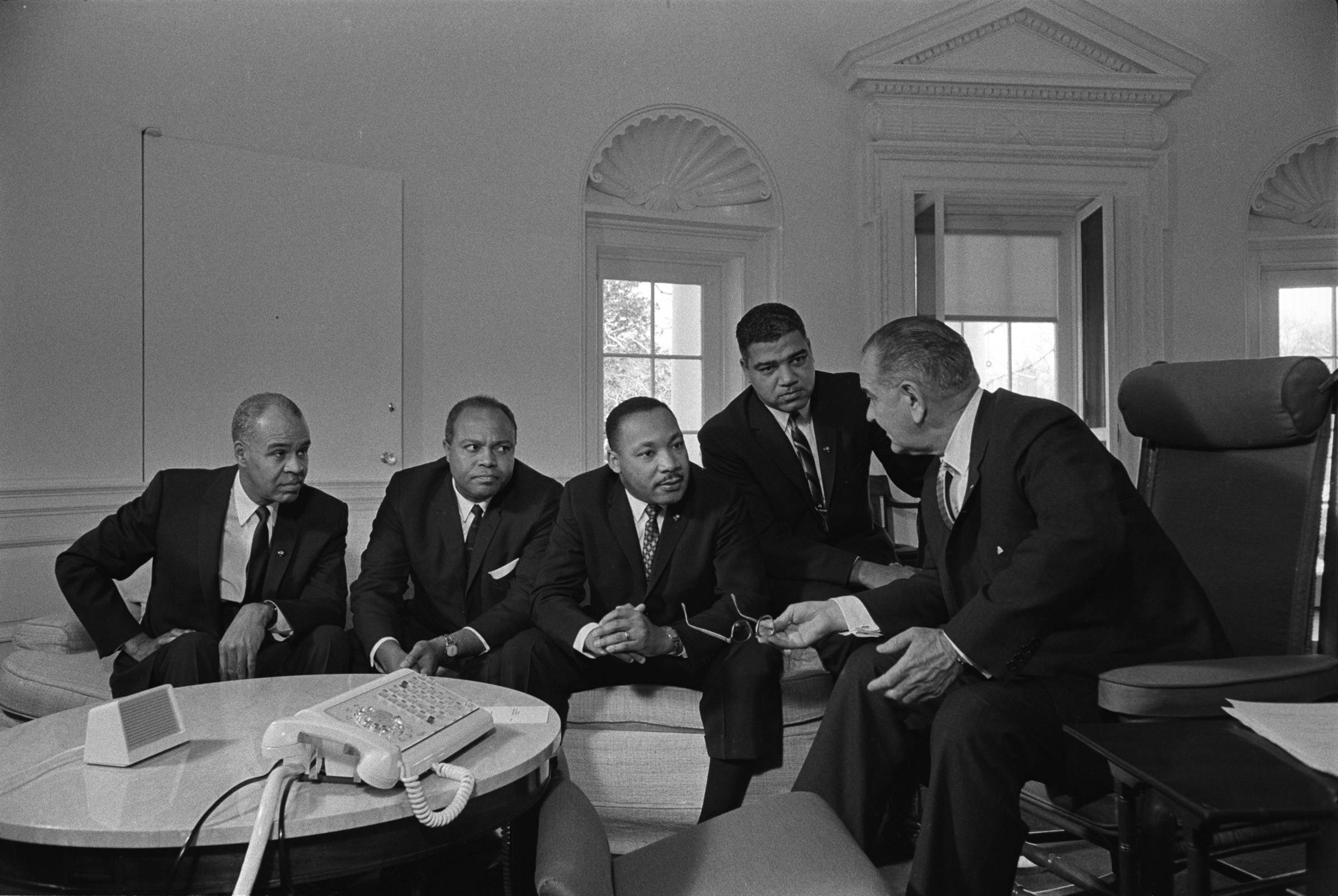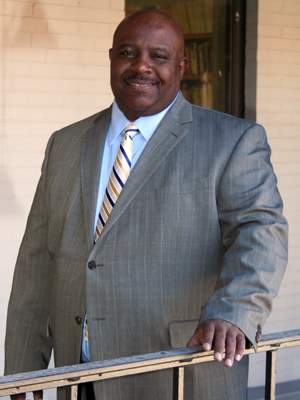Texas State professor reflects on Civil Rights Act impact
Brian Hudgins | July 2, 2020


The turning point came when people could no longer deny what they were seeing.
President Lyndon B. Johnson (B.S. ’30) signed the Civil Rights Act into law on July 2, 1964. Before that pen could be put to paper, change had to take place.
“You look at what happened in Mississippi and Alabama— they killed people,” said Dr. Dwight D. Watson, associate professor emeritus of history at Texas State University. “They killed white civil rights workers. You had pressure by Dr. King and you had the TV news at 5 and 6 p.m. That changed things.”
As TV news broadcasts showed images of the fight for civil rights to households throughout the nation, people who were previously separated from it by hundreds or thousands of miles faced a new reality. Hearing about the civil rights struggle on a radio turned into witnessing video. “They were more aware of it and could not deny it when they see it,” Watson said. “People in the north were not seeing the same things in their own communities.”
Assaults and murders made the lasting impressions. However, the march to the Civil Rights Act contained many more nonviolent obstacles. Poll taxes, literacy tests, changes in voting locations and voting hours were just a handful of hindrances. “African Americans faced a number of obstacles voting in Texas and around the country,” Watson said. “White men wanted to keep an agrarian nation with a low-functioning working class. A country of narrow elite, much like before the (Civil) war. People were bound by economics to the South.”
When civil rights advocates attempted to pool their voices, the pushback came in various forms – some psychological and some physical. “Literate blacks tried to push the vote, but they lost to intimidation and violence,” Watson said. “There were signs, overt threats and people shot into the air to intimidate. If you were an organizer or sharecropper, people were run off land or had their hay get burned.”
The determined voice of Dr. Martin Luther King Jr., provided one pillar. TV news provided another avenue of information. The final pillar: action in 1964.
“LBJ as president had enough gravitas and political favors and enough ‘I don’t give a damn,’ ” Watson said. “There are certain things you can’t do to people. That didn’t make him a liberal or a conservative. LBJ used his immense political strength. The U.S. was looking bad to the world. There still would be major opposition to the Voting Rights Act and Civil Rights Act.”
The impact of the Civil Rights Act carries over today to the mission of Texas State University. Major steps have been taken. Watson stressed there are still steps to take. “I have been at Texas State for 21 years. While Texas State has made tremendous change, it is the last school in the state of Texas that admitted students of color by court order (in 1963). To become a Tier 1 school, we have to make bold moves, take criticism and become the great school we desire.”
Just as TV news media played a role in the eventual formation of the 1960s Civil Rights Act, social media has a part today in the communication lines. Positive influence includes providing information on voting dates and voting registration requirements.
“Some attempt to spread venom,” Watson said. “You also see people trying to help folks. I teach a class on Facebook Live. I give people recipes. It opens up communication. The biggest thing is the flow of positive information. Using Twitter, Instagram (and other outlets), you are able to get ideas out to people faster.”
Watson, who will be retiring in August, sees the continued impact of the Civil Rights Act within the student body and faculty makeup of the university. “The Civil Rights Act amounts to a cry for justice,” Watson said. “You do not get justice until you get equality. The mission of Texas State is to make the students and staff look like the state of Texas. We still have steps to take. The Civil Rights Act prohibits discrimination. If you make decisions according to the Civil Rights Act, universities will look like the communities they serve.”
Share this article
For more information, contact University Communications:Jayme Blaschke, 512-245-2555 Sandy Pantlik, 512-245-2922 |